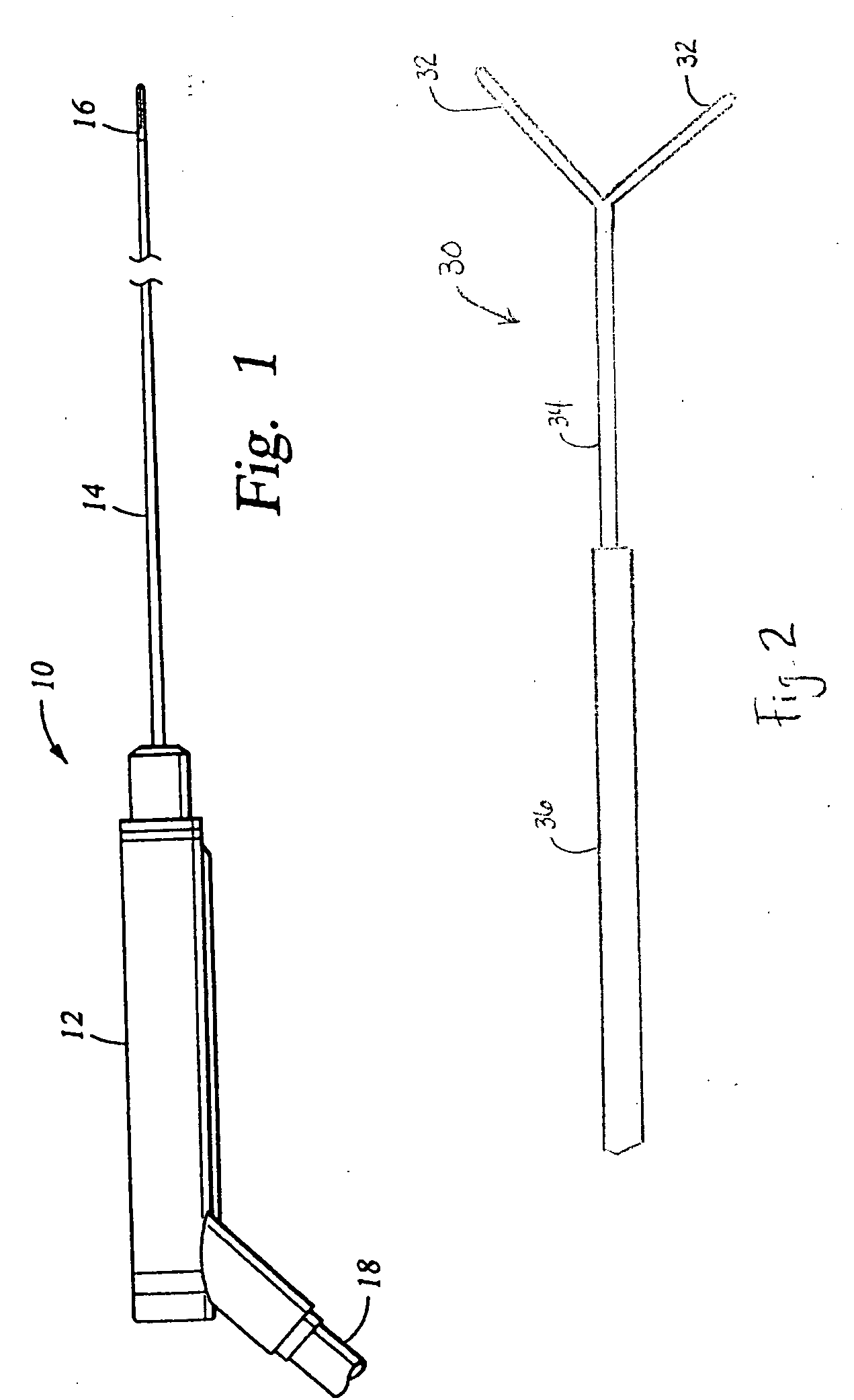Cryosurgical devices and methods for endometrial ablation
a technology of endometrium and surgical equipment, which is applied in the field of cryosurgical equipment and methods for endometrial ablation, can solve the problems of difficult coverage, discomfort or possible tissue damage to the vagina, and a significant amount of time and skill in manipulating the rolling device to ensure the destruction of the entire endometrium
- Summary
- Abstract
- Description
- Claims
- Application Information
AI Technical Summary
Benefits of technology
Problems solved by technology
Method used
Image
Examples
Embodiment Construction
[0028] Referring now to the Figures, wherein the components are labeled with like numerals throughout the several Figures, and initially to FIG. 1, one configuration of a cryosurgical probe 10 that can be used for cryoablation of endometrial tissue in the uterus of a female patient is shown. The probe 10 generally includes a handle 12, a hollow tubular cannula 14, and a cold tip 16. The handle 12 can be metallic to facilitate effective sealing of the components to minimize any gas or fluid leakage that might otherwise occur. The handle 12 can also be provided with insulating properties so that it is comfortable for the user to manipulate, such as may be provided by the inclusion of insulation (e.g., aerogel) in the handle or in the form of a vacuum space within the handle. Several components of the refrigeration system, such as heat exchangers, can optionally be housed within the handle 12, as will be discussed in further detail below. Other components may also be housed within the ...
PUM
 Login to View More
Login to View More Abstract
Description
Claims
Application Information
 Login to View More
Login to View More - R&D
- Intellectual Property
- Life Sciences
- Materials
- Tech Scout
- Unparalleled Data Quality
- Higher Quality Content
- 60% Fewer Hallucinations
Browse by: Latest US Patents, China's latest patents, Technical Efficacy Thesaurus, Application Domain, Technology Topic, Popular Technical Reports.
© 2025 PatSnap. All rights reserved.Legal|Privacy policy|Modern Slavery Act Transparency Statement|Sitemap|About US| Contact US: help@patsnap.com



